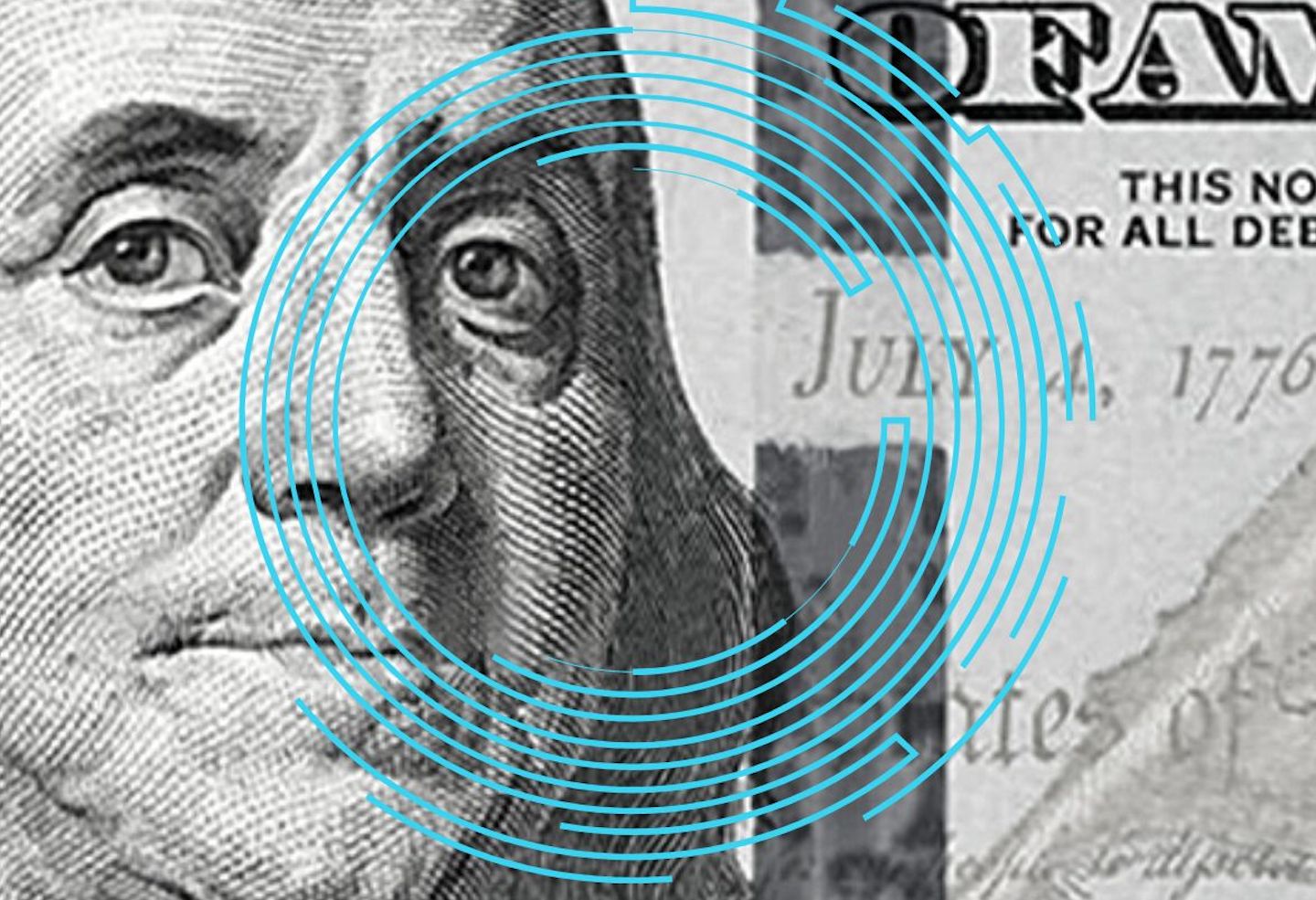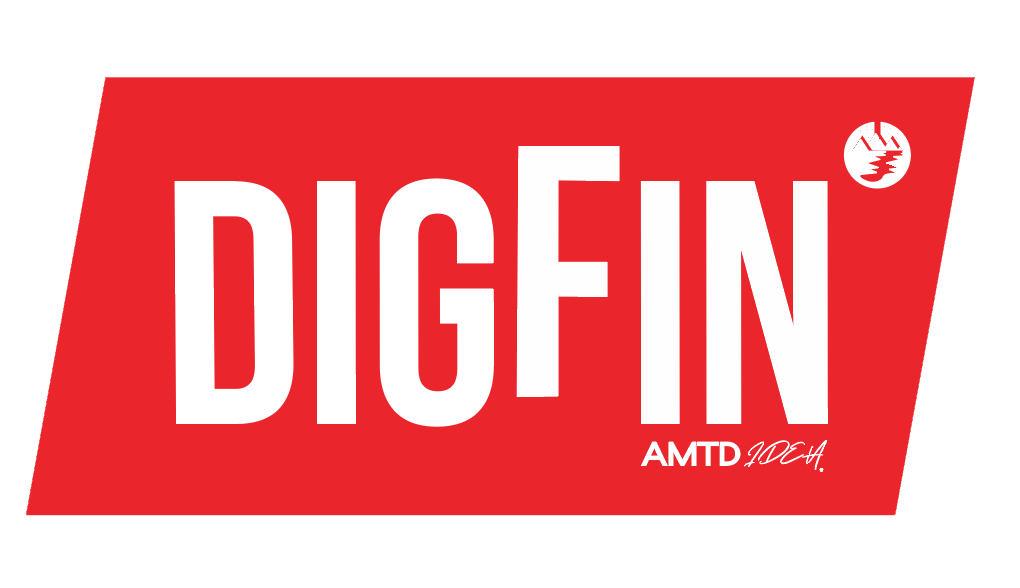Capital Markets
Tokenization moves forward with US short-term debt
Crypto fintechs are giving tokenization a reboot by putting US debt instruments on blockchain.
Published
2 years agoon
By
admin
Tokenization of real-world assets on blockchain has been much talked about in crypto circles for years, with illiquid assets such as real estate considered prime targets. But the industry has little to show for it.
Until this year. Several fintechs are launching tokenized products, but instead of targeting specialized asset classes, they are beginning with the most basic, liquid exposures of all: short-term US debt.
Beginning in February, fintechs in the United States, Hong Kong and Singapore have launched tokens representing pools of Treasury bills and government repurchase agreements (repo).
In that time, the market for securities tokens has gone from zero to $339 million, according to Steakhouse Financial, a crypto data provider. Tokens representing money markets comprise almost all of that total.
“Real-world assets are key to crypto reaching the next $1 trillion market cap,” said Cynthia Wu, co-founder and COO of Matrixport in Hong Kong, whose product, MatrixDock, is one of the fintechs putting T-bills on blockchain.
The role of short-term debt
In one respect, these crypto fintechs are actually late to the party. Broadridge, a traditional bank-technology vendor, has been tokenizing repo on a permissioned decentralized ledger since 2021. It’s now processing up to $1 trillion a month for users such as Société Générale and UBS. But this is using blockchain to make existing rails more efficient for financial institutions, rather than create crypto-native tokens.
US debt is attractive to the crypto community today because the Federal Reserve’s overnight rate is now 5.33 percent, up from 2.33 percent 12 months ago. Investors holding digital assets can purchase tokens that provide an economic representation of US debt, and pocket the yield.
Such “earn” products have a bad history in crypto. Companies such as Celsius and FTX promised investors heady annualized returns, as high as 18 percent, at a time when US overnight interest rates were touching zero. Such schemes were frauds, and Celsius and FTX officials are now facing criminal charges.
The 2023 generation of yield products are supposed to be operating on a genuine footing. Their promotors say they are purchasing US debt instruments to provide a one-to-one backing of the value of their tokens.
Rebooting crypto
Given the current macroeconomic conditions, they don’t need to make up stories. Crypto investors have few places to put their coins. They can invest in Bitcoin, which is volatile; they can back crypto projects, which exposes them to venture-like risks; they can safekeep their assets in stablecoins, but these pay no return.
Cryptoholders are also eager to keep their coins someplace other than in custody with digital-asset exchanges. Exchanges tend to commingle customer assets with the exchange’s own assets, especially if the exchange operates its own investment funds. In this unregulated part of the industry, this transforms exchange “investors” into unsecured lenders to the exchange.
- Read more:
- Schroders plots ‘tokenized investment vehicles’
- Franklin Templeton seeks fintech partners in Asia
- Circle sees Asia becoming center of USDC liquidity
The emergence of crypto companies that can tokenize T-bills and other short-term instruments such as repo now gives investors a way to earn a realistic return.
They say the tokenized version of US debt is better than the real thing. First, a borderless token gives new players access to US debt.
“Crypto is a wallet to access everything,” said Raagulan Pathy, vice president for Asia Pacific at Circle, issuer of the stablecoin USDC. “T-bills now pay a genuine yield. Fintechs can buy these notes, tokenize them, and provide it to investors via a protocol.”
Benefits of tokenized money markets
These are securities tokens, so they must only be sold to accredited investors that have gone through a KYC/AML check. Even so, there may be institutional investors or family offices in emerging markets that wouldn’t have access to US government debt. Most do, of course, given the ubiquity of US debt, but tokenizing T-bills sets a precedent for other asset classes that do not travel as easily.
The flip side to access is utility. These securities tokens are being pitched to DAO treasuries (the financial managers of decentralized teams), crypto funds, and for use on decentralized exchanges. Tokens can be used as collateral for lending or for staking, and given they bear a yield, they can enrich the DeFi space.
The second advantage to tokens are they rely on smart contracts to automate layers of intermediaries such as fund administrators and transfer agents. Fintechs are passing these cost savings to investors, allowing them to offer almost the entire yield.
Projects such as OpenEden in Singapore claim they provide up to 5.34 percent; others give back a little under 5 percent. Plus they trade 24/7 onchain and settle instantly. A traditional money market fund requires three or more days to settle, whereas a blockchain project enables instant settlement, assuming the investor already has assets onchain.
“By adopting smart contracts, we enable instant settlement, thereby reducing settlement risk and intermediary costs,” said Eugene Ng, co-founder of OpenEden, which has launched its TBILL token project. “This is why financial institutions are eager to move into tokenization.”
Institutions join the fray
Indeed, one institution has joined the party: Franklin Templeton’s token BENJI trades on the Polygon blockchain and represents short-term debt. One BENJI token equates to one share in Franklin Templeton’s OnChain US Government Money Market Fund (FOBXX). The firm makes this available to US accredited investors through its Benji app.
Franklin Templeton remains, however, a tiny player in this nascent market, with just $2 million of assets, or 0.6 percent of the securities token market cap. Other traditional asset managers have experimented with proofs of concept, such as Schroders and Calastone laying groundwork for “tokenized investment funds”, but have yet to deploy these.
The fintechs welcome the legitimization that such players bring to the space, but they don’t expect traditional asset managers to play a leading role.
“Our engineers have a different DNA from TradFi,” said Ng. “They might be able to evolve, but they will always view things through their traditional lens.”
Down the credit curve
The biggest player in securities tokens is Ondo Financial in New York. It has 48 percent of the market, with $163 million of assets. It offers several types of US debt products for US investors. It invests those assets into bond products managed by traditional firms such as BlackRock and Pimco, and creates bond exchange-traded products that are then tokenized.
Ondo has even begun to tokenize longer-dated securities as well as high-yield bonds, to generate even higher returns. It recently introduced a product just for non-US investors.
This is unusual, because other fintechs are deliberately shying away from longer-dated instruments, citing the collapse of Silicon Valley Bank in April.
SVB went under because its assets were mainly in long-dated US Treasuries. This looked safe, but the sharp rise in interest rates caused the tradable portion of SVB’s portfolio to book losses. To cover those, SVB was forced to sell from its hold-to-maturity portfolio, forcing it to discount those bonds too.
Staying short
Fintechs are therefore sticking to T-bills (bills are Treasury debt of less than 12 months’ tenor) and repo (overnight or 48-hour loans among banks, with the borrower promising to sell the instrument back at a tiny premium; they are essentially very short-term collateralized loans).
After Ondo, the biggest player so far is MatrixDock, which as 36 percent of the market, with $112 million of assets in its Short-Term Bill Token (STBT).
Matrixport’s trading desk manages the buying and selling of T-bills and repo, and tokenizes those assets, using stablecoins as intermediaries. “The token must have one-to-one backing of the underlying assets, and be 100 percent bankruptcy remote,” Wu said.
(OpenEden is ranked fifth, with $12.5 million, or 3.7 percent market share; other players include Maple Finance, Backed, and Swarm, which are tokenizing bonds as well as stocks for companies popular with the crypto crowd, such as Coinbase and Tesla.)
Trusts and custodians
This raises questions about the structure of these tokens. Some are funds, some are ETFs, but all represent a pool of assets that is turned into a security token – essentially a securitization of underlying obligations.
The fintechs such as Ondo, Matrixport and OpenEden are the platforms that manage the assets. The actual issuer of the tokens are trusts or other special-purpose vehicles. The idea is that if the fintech goes bust, the client assets are safe because they’re held by the SPV. These SPVs are also responsible for verifying that they hold the assets they claim are backing the tokens.
The details of these SPVs vary among providers. Ondo has an onshore entity called Ankura Trust. Matrixport uses a law firm, Appleby, which oversees a trust domiciled in the Seychelles. OpenEden declined to name theirs, but says it’s in the British Virgin Islands.
But there is a second layer of custody, and this gets to another complication with these tokenized assets. The SPVs issue the tokens and verify their holdings, but they must outsource the actual holding of the T-bills to a traditional custody bank. The T-bills exist in the real world, so they need to be vaulted by a real-world custodian.
Appleby, for example, uses BNY Mellon and other banks to hold the assets in its trust for the STBT token.
However, the US Securities and Exchange Commission requires custodians of digital assets to record those assets on their balance sheets. This hasn’t stopped the emergence of tokenizing T-bills, but it could complicate the product’s growth.
Proof of Reserves
Another challenge is verifying the assets. These fintechs are relying on “oracles” such as Chainlink or Chainalysis to conduct Proof of Reserve checks on the assets, to validate they exist.
The underlying assets are rated AAA, which the fintechs are marketing on their websites. But Proof of Reserves is not the equivalent of a traditional audit. It is just a snapshot of what’s on the electronic balance sheet at a specific time. Proof of Reserves doesn’t look at what kind of liabilities these trusts may hold. It doesn’t check whether they quickly purchased assets to fill the book, and then sold them off the next day. It doesn’t consider the broader exposures the trust or its operator may have.
Crypto-native players such as DAOs may be happy to go with Proof of Reserves. However, if the industry is to attract serious institutional money, will Proof of Reserves be enough?
Revenue models
If the fintechs are doing everything properly, they have another issue: these tokens don’t earn them money, at least not now. To gain traction they are passing on all of the yield. MatrixDock, for example, charges 10 basis points annualized on assets under management, and 10bps on redemptions. That’s peanuts.
“This is our lowest-margin product,” Wu said.
But she says the goal is to create a market for tokenized assets so that the industry can develop other products that can deliver revenues – be it real estate, collectibles, or other types of debt.
Gradually these fintechs want to create a yield curve on DeFi protocols such as Curve, dydx and OneInch. For now, however, there is not yet significant liquidity with these tokens. And for there to be liquidity, there needs to be a large user base. If the same group of crypto whales buy up all these tokens, the industry won’t develop.
Lack of growth in one area can hinder the industry in others.
Constrainted growth would tempt fintechs to retain more of the yield, or get up to shenanigans with customer assets – or simply to change their terms of service and start operating like fractional-reserve banks, on-lending those assets to generate returns. But Proof of Reserves won’t offer the kind of transparency for investors to know for sure.
Standards to come?
The variety of structures is testament to fintechs’ creativity as they seek to jumpstart tokenization. But they will need to settle into accepted standards if the industry is to advance. Stablecoins offer a positive example. After the implosion of Terra/Luna, regulators such as the Monetary Authority of Singapore and the Hong Kong Monetary Authority have begun to issue guidelines and regulations.
But not yet for tokenized money markets, which are too new. The risk isn’t just that these tokens may lack one-to-one backing. The risk is in how those underlying assets are composed. Are they only super-safe, short-term paper? How far out do tenors extend? What’s their liquidity, their duration risk? The fintechs say they won’t expose users to a risk à la Silicon Valley Bank, but how do they prove that – and generate revenues for themselves?
The risks that may lie in the details of these structures are not a big deal while the industry is just getting started. But if it grows too fast, they will become important.
Assuming tokenized T-bills continue to grow and prosper, questions will also arise for other players, both in crypto and in TradFi.
Versus stablecoins
Stablecoin issuers are the most likely to be impacted, because stablecoins don’t pay any yield. If investors deem tokenized T-bills to be safe, they won’t park money in stablecoins.
Also, stablecoins are not as stable as they may seem: the market leader, Tether, has had regulatory run-ins over false statements about its reserves; Circle has been careful to play by the book, but USDC briefly de-pegged from the dollar during the SVB collapse when the market was very anxious about bank runs. Their advantage may lie in being regulated.
The relationship between stablecoins and tokenization fintechs is complex. On the one hand, the fintechs boast of displacing stablecoins thanks to their offering a yield; on the other, they rely on them as gateways.
Pathy says it’s possible that crypto players will keep fewer assets with the likes of Circle. “But what we want is to grow the pie. Any product that enables access and grows the use cases for crypto is good for us. Our job is to facilitate the growth of DeFi.”
Versus TradFi
In theory, the success of these tokenized money-market funds could pose a risk to commercial banks. Commercial banks, after all, do not fully back depositors. They on-lend the vast majority of customer deposits, and rely on size and scale to be sure they have enough reserves on hand for any given day.
In return, banks pay depositors next to nothing, even as they’re collecting yield from the Fed on their overnight reserves, or from their own credit activities. If commercial banks gave back all of that yield to depositors, they’d go broke.
Banks are therefore not likely to champion tokenized T-bills, at least not if they grow so large as to challenge their existing business model. This is good and bad for the crypto market: good in the sense that it means big financial institutions won’t become competitors, bad because it also throws up barriers to institutional adoption.
Broadridge’s repo DLT product shows that institutions are happy to use blockchain finance that is tailored to their current needs, so they may not feel like they’re missing out on the DeFi verison. And tokenized money markets, because they are securities, are off limits to retail.
Tokenized T-bills is a positive step for the post-FTX crypto industry. It has plenty of room to grow. But it may have to advance on its own steam.
You may like
-


Finance’s next AI revolution | Chris Perry, Broadridge
-


TradFi DLT reality check: what’s working, what’s not
-


Why the RWA revolution will not be televised
-


The RWA revolution will not be televised, part 2
-


The RWA revolution will not be televised, part 1
-


OKX investing into making Bitcoin a lot more usable
The Future of Cross-Border Payments with VISA Direct
DigFin direct!

Has ASX learned the lessons of its DLT failure? UPDATED

InDrive Money and Fingular enter Indonesia ride hailing

Mikaal Abdulla is back in Hong Kong with a Boom

Finance will feel Kai-Fu Lee’s pivot to genAI applications





